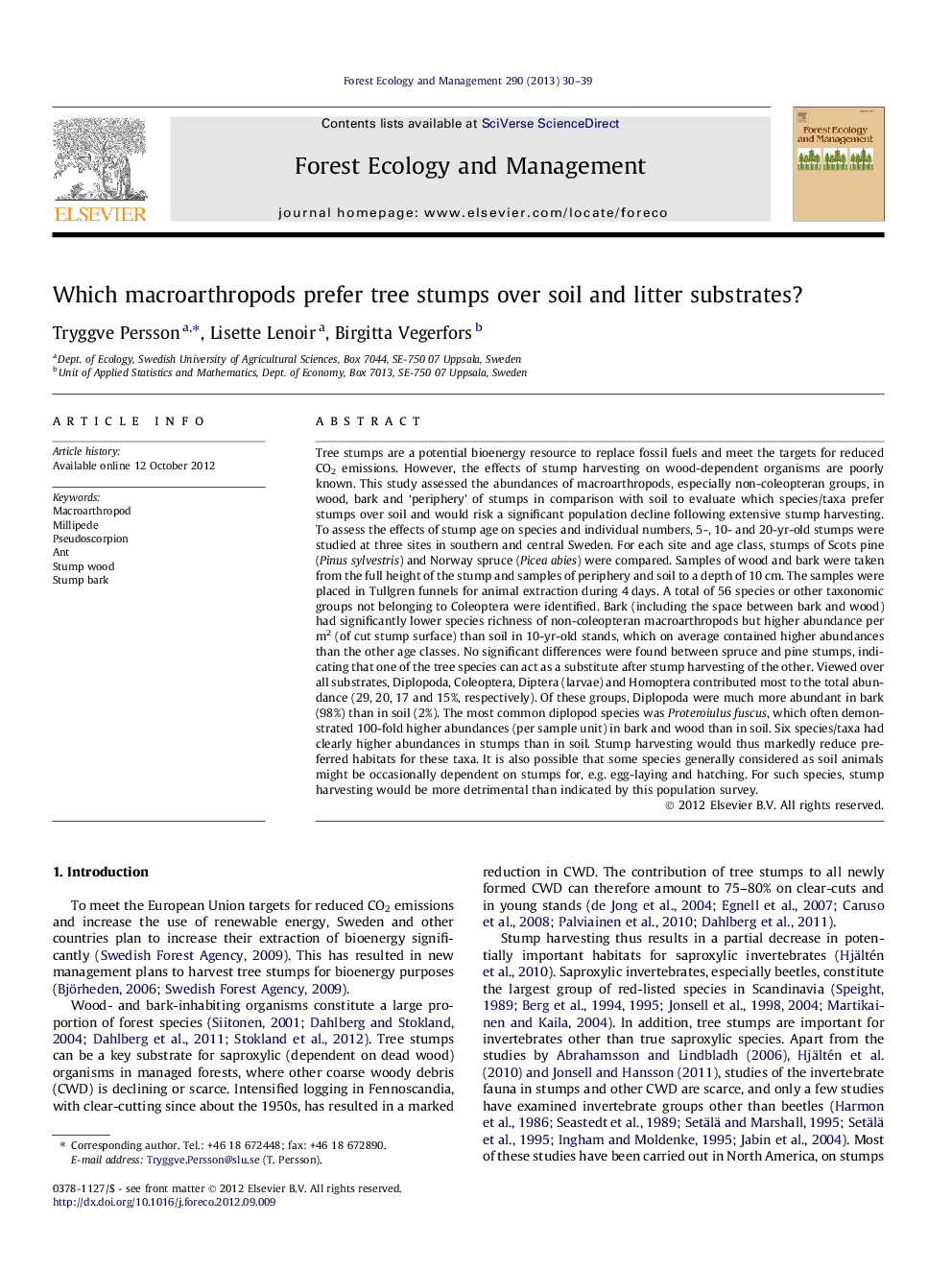| کد مقاله | کد نشریه | سال انتشار | مقاله انگلیسی | نسخه تمام متن |
|---|---|---|---|---|
| 87157 | 159235 | 2013 | 10 صفحه PDF | دانلود رایگان |

Tree stumps are a potential bioenergy resource to replace fossil fuels and meet the targets for reduced CO2 emissions. However, the effects of stump harvesting on wood-dependent organisms are poorly known. This study assessed the abundances of macroarthropods, especially non-coleopteran groups, in wood, bark and ‘periphery’ of stumps in comparison with soil to evaluate which species/taxa prefer stumps over soil and would risk a significant population decline following extensive stump harvesting. To assess the effects of stump age on species and individual numbers, 5-, 10- and 20-yr-old stumps were studied at three sites in southern and central Sweden. For each site and age class, stumps of Scots pine (Pinus sylvestris) and Norway spruce (Picea abies) were compared. Samples of wood and bark were taken from the full height of the stump and samples of periphery and soil to a depth of 10 cm. The samples were placed in Tullgren funnels for animal extraction during 4 days. A total of 56 species or other taxonomic groups not belonging to Coleoptera were identified. Bark (including the space between bark and wood) had significantly lower species richness of non-coleopteran macroarthropods but higher abundance per m2 (of cut stump surface) than soil in 10-yr-old stands, which on average contained higher abundances than the other age classes. No significant differences were found between spruce and pine stumps, indicating that one of the tree species can act as a substitute after stump harvesting of the other. Viewed over all substrates, Diplopoda, Coleoptera, Diptera (larvae) and Homoptera contributed most to the total abundance (29, 20, 17 and 15%, respectively). Of these groups, Diplopoda were much more abundant in bark (98%) than in soil (2%). The most common diplopod species was Proteroiulus fuscus, which often demonstrated 100-fold higher abundances (per sample unit) in bark and wood than in soil. Six species/taxa had clearly higher abundances in stumps than in soil. Stump harvesting would thus markedly reduce preferred habitats for these taxa. It is also possible that some species generally considered as soil animals might be occasionally dependent on stumps for, e.g. egg-laying and hatching. For such species, stump harvesting would be more detrimental than indicated by this population survey.
► Stump bark had higher macroarthropod abundances than other substrates in 10-yr-old stands.
► Diplopoda was the most abundant macroarthropod group in stumps.
► Six out of 56 non-beetle species/taxa had markedly higher abundances in stumps than in soil.
► Stump harvesting will reduce preferred habitats and population sizes for these six taxa.
► No differences in abundances were detected between spruce and pine stumps.
Journal: Forest Ecology and Management - Volume 290, 15 February 2013, Pages 30–39